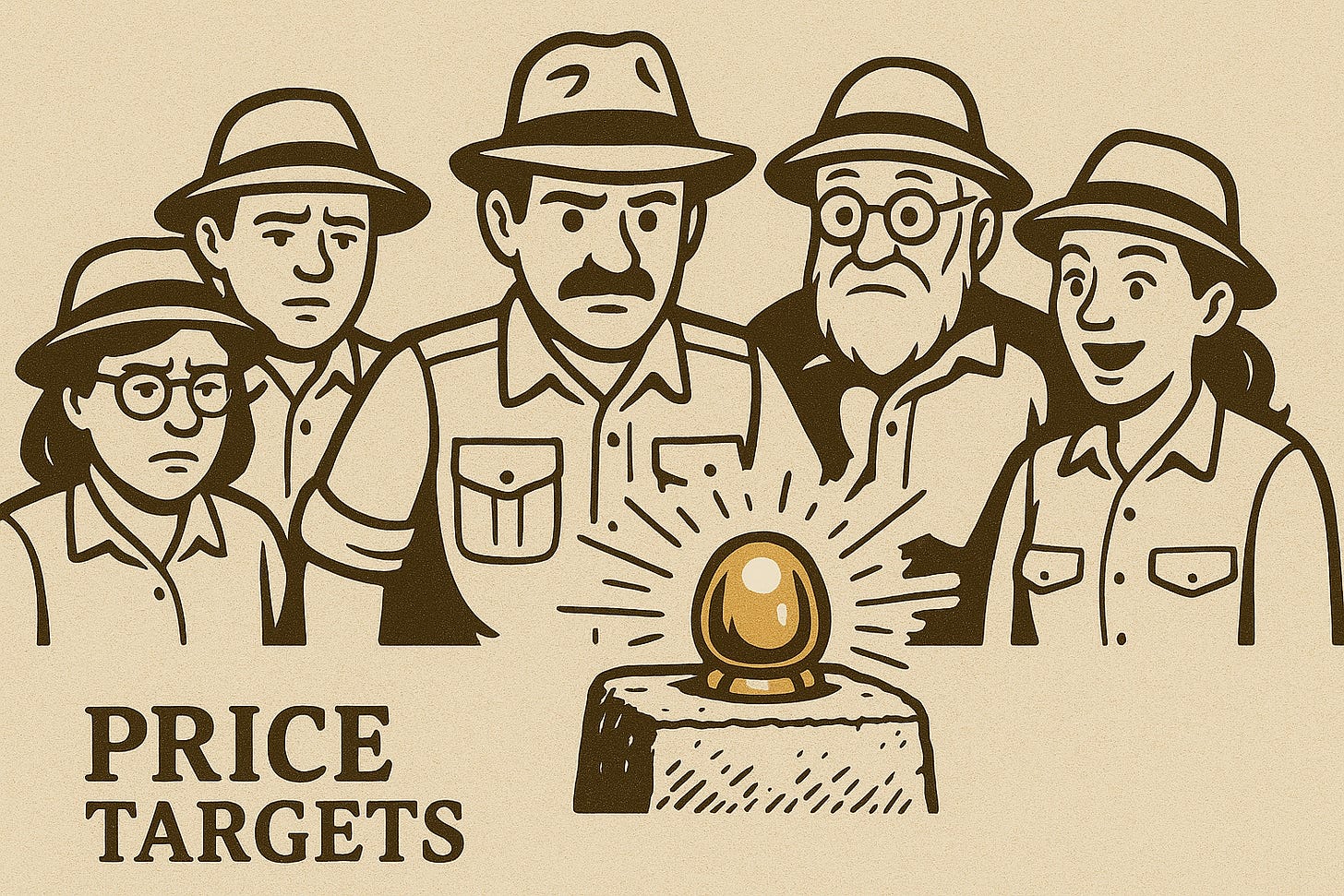Let's talk about what the spreadsheet jockeys on Wall Street are thinking. To be clear: this is external data. It's opinion, it's consensus, sometimes it's herd mentality. It's not the raw signal generated by The Stock Archeologist looking at market action. But ignoring it entirely? Naive. This stuff can move markets, provide a sanity check, or highlight potential disconnects. So, the program accounts for it, but with the right perspective.
What it is: This is the average price where Wall Street analysts collectively think a stock should be trading, usually over the next 12 months. It's a consensus number pulled from multiple analyst estimates.
Why track it? Simple. It gives you a quick read on perceived value according to the suits. If the current price is way below the target, they see potential upside. If it's way above, they might think it's overvalued (or, more likely, they haven't updated their models fast enough). It’s a sentiment gauge.
How the program uses it: The Stock Archeologist calculates the percentage difference between the current closing price and that consensus target.
Confidence Score Impact: This nudges the overall confidence score. A significant discount to the target price (e.g., current price is 15%+ below target) gives a positive bump to confidence. A significant premium (e.g., current price 10%+ above target) gives a negative bump. Price near the target? Minimal impact. It's a contributing factor, weighted appropriately – meaning, not nearly as much as the core signals. Don't trade solely based on this; that's just following the crowd.
What it is: This boils down the overall analyst sentiment into a simple grade: Strong Buy, Buy, Hold, Sell, Strong Sell. It's based on aggregating the ratings from numerous analysts covering the stock.
Why track it? It’s a quick sentiment snapshot. A strong "Buy" consensus might indicate broad institutional interest. A "Sell" consensus? Potential headwinds or perceived problems. Again, it reflects their collective view.
How the program uses it: It grabs the latest consensus ratings. Internally, it uses a simple point system (Strong Buy gets the most positive points, Strong Sell the most negative, Hold is slightly negative). This generates an overall score which maps to that final outlook category you see.
Confidence Score Impact: A strongly positive consensus (lots of Buys/Strong Buys) provides a positive nudge to the confidence score. A strongly negative consensus (lots of Sells/Strong Sells) gives a negative nudge. Mixed or heavily "Hold" ratings? Minimal impact. It tells us if we're swimming with or against the analyst current. Like targets, it’s factored in, but it doesn’t drive the bus.
Look, analysts are often late to the party. They react to news, they follow trends. Sometimes they nail it, sometimes they're miles off. The Stock Archeologist is focused on price action, volume, momentum – the market's actual footprint.
These analyst metrics are valuable context. They help frame the program's signals. A bullish signal from my program coupled with strong analyst support and a discounted price target? That's potentially more interesting. A bullish signal fighting against a "Sell" rating and an already-exceeded price target? Requires more caution.
Use this data intelligently. It’s another layer in the archeological dig, helping you understand the environment surrounding the artifacts my program uncovers. Don't mistake the map commentary for the treasure itself.
Focus on the primary signals. Use the analyst data as supporting evidence, or a reason to dig deeper.
Clear? Good. Time's ticking.
Caesar







